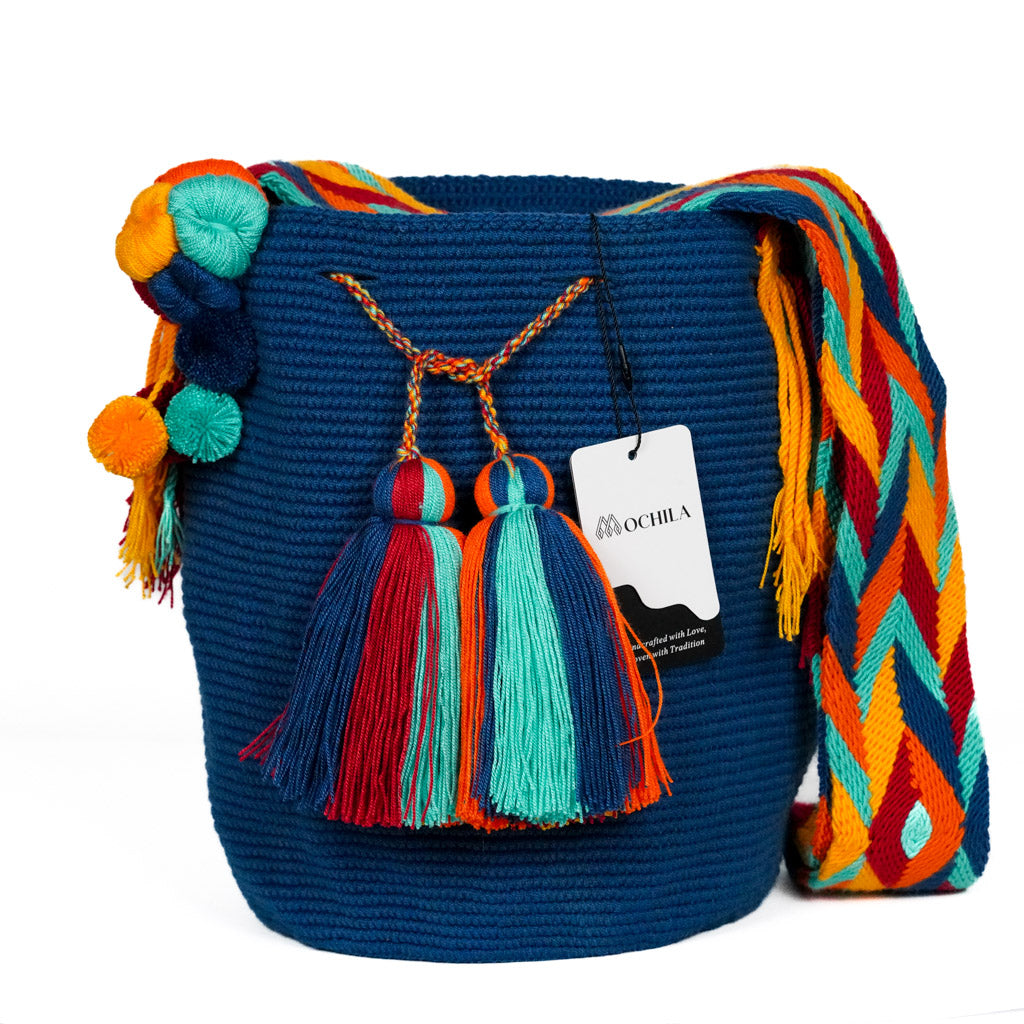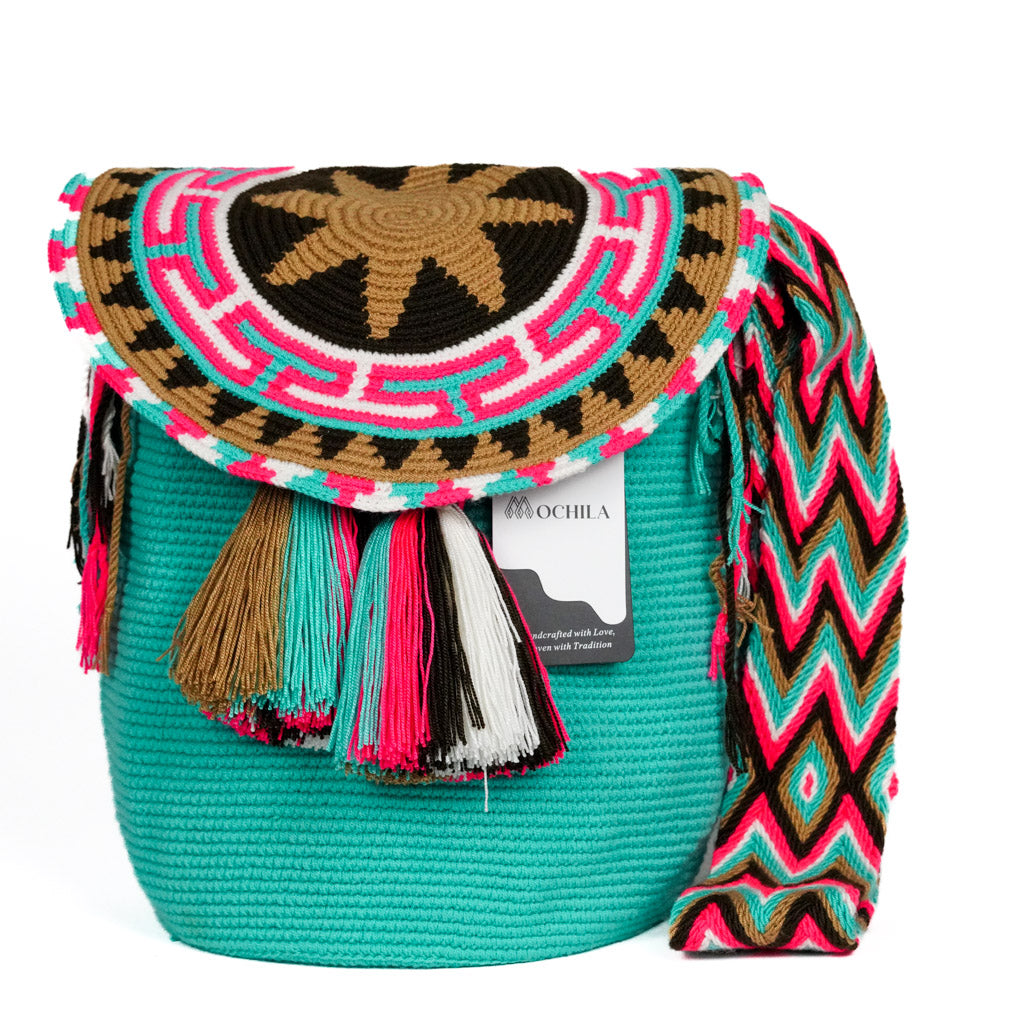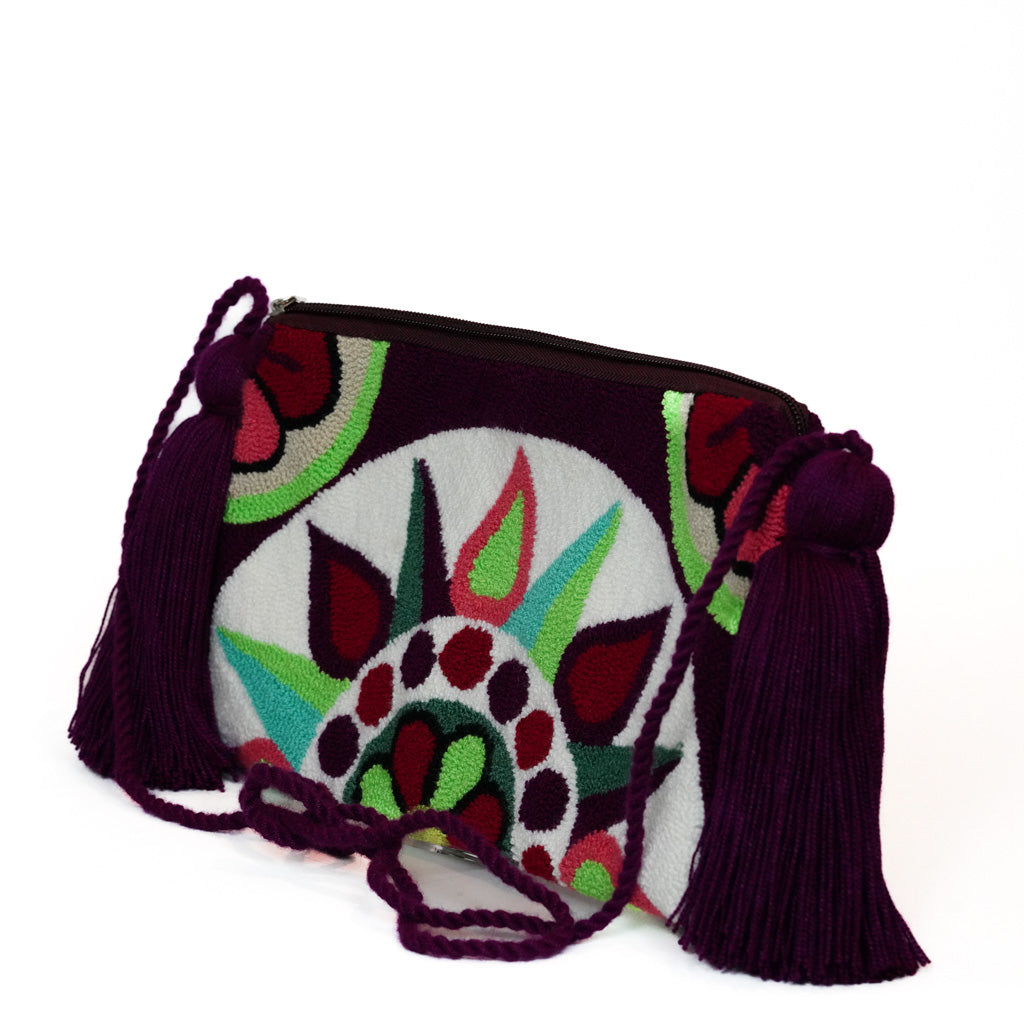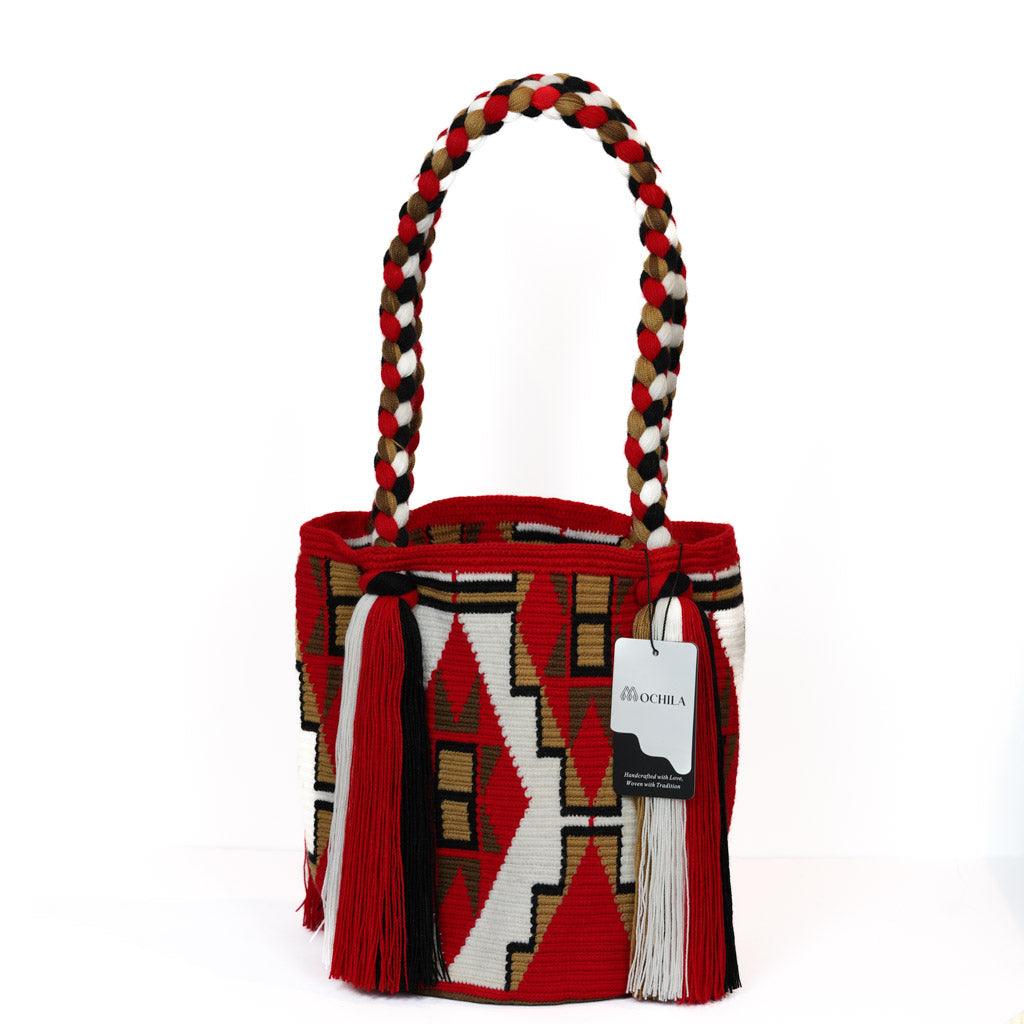
What is Mochila Wayuu and Its History
The vibrant and strikingly beautiful Mochila Wayuu is a unique handcrafted masterpiece from South America that has garnered international acclaim. If you've ever seen these colorful, handmade bags and wondered what they were, you've come to the right place. The Mochila Wayuu, synonymous with the culture and tradition of the Wayuu tribe, has a fascinating history and cultural significance.
The Wayuu (pronounced "wah-yoo") tribe is an indigenous group located in the Guajira Peninsula, an arid region shared between Colombia and Venezuela. The tribe, known for its vibrant art and resilient spirit, has managed to maintain its unique culture and traditions amidst the modern world's rapid changes.
The Mochila Wayuu, a staple of the Wayuu tribe, is not just a bag; it represents a crucial part of the tribe's history and identity. The bags' intricate designs and radiant colors depict various aspects of the Wayuu's way of life, spiritual beliefs, and natural surroundings. Each bag is an embodiment of a story, woven with care and precision into the fabric.
The history of Mochila Wayuu dates back several centuries. Weaving has been a critical part of the Wayuu tribe's culture, passed down through generations from mothers to daughters. This tradition is seen as a rite of passage, marking the transition from girlhood to womanhood. Wayuu girls learn the art of weaving under the guidance of their mothers and grandmothers. The process begins with weaving the Susu, a small bag, before progressing to the more complex Mochila bag.
The production process of a Mochila Wayuu is labor-intensive and time-consuming. Each bag is hand-woven using a technique that combines crochet and weaving, taking approximately 15 to 20 days to complete. The bags are made from cotton thread, and each one is unique, featuring a distinctive pattern that reflects the weaver's creativity and imagination.
The quality of a Mochila Wayuu is determined by its tightness and the complexity of its design. The two most common types are the "Susu" and "Kanasu." The Susu, a single-thread bag, is lighter and more flexible, while the Kanasu, a two-thread bag, is sturdier and more durable.
In the 20th century, the Mochila Wayuu gained international recognition. As tourism to the region increased, visitors were captivated by the bags' beauty and craftsmanship, leading to global demand. Today, Mochila Wayuu bags are celebrated worldwide for their unique style and ethical craftsmanship, contributing significantly to sustainable and fair-trade fashion.
Despite their popularity, the Wayuu tribe faces socio-economic challenges. It is crucial to ensure that the proceeds from Mochila Wayuu sales support the Wayuu community. Buying these bags from reputable sources ensures the artisans receive fair compensation for their work and helps preserve their vibrant culture.
The Mochila Wayuu is a testament to the resilience and creativity of the Wayuu tribe. These bags carry within them centuries of tradition, portraying stories of the tribe's history and identity through their mesmerizing patterns. They serve as an essential reminder of the beauty of indigenous art and the importance of preserving these traditions.
Now that you're familiar with the story behind the Mochila Wayuu, you're not just looking at a bag; you're looking at a piece of art, a piece of history, and a symbol of an enduring culture. Owning a Mochila Wayuu means carrying a piece of the Wayuu tribe's soul and contributing to the preservation and recognition of their unique heritage.
Shop Our Collections

Crossbody Bag Mochilas
Discover the enchanting array of Crossbody bag Mochilas in our collection, each meticulously handwoven by skilled Colombian artisans. ... These large, spacious bags seamlessly combine timeless traditional crafting techniques with contemporary design aesthetics, presenting a stylish statement piece imbued with rich history and flair. Every Crossbody bag Mochila in our collection is a testament to vibrant colors and expressive cultural narratives, each meticulously interwoven into the fabric of the bag, bringing life and style to your wardrobe. Dive into the diverse and colorful world of our Crossbody bag Mochila, where each piece tells a unique story of Colombian heritage and craftsmanship. Whether you're looking for a practical companion for your everyday adventures or a standout accessory to elevate your style, our Crossbody bag Mochila collection offers a wide range of options to suit your individual needs and tastes. Browse through our selection and find the perfect Crossbody bag Mochila that resonates with your sense of style and adds a touch of Colombian spirit to your ensemble.
Featured collection

Womens Handbags & Clutches
Discover Mochila's curated collection of Womens Handbags & Clutches, where sophistication meets functionality. ... Each piece in this collection is thoughtfully designed for the modern woman, blending timeless elegance with practical utility. From versatile Crossbody Handbags that transition seamlessly from day to night, to the chic statement Designer Clutches perfect for special occasions, Mochila ensures every woman finds her perfect match. Crafted with the finest materials and impeccable attention to detail, our handbags stand out not just for their beauty, but also their durability. Dive into a world where fashion meets function, and elevate your everyday style with Mochila's exquisite range of Womens Handbags & Clutches.
Featured collection

Tote Bag Mochilas
Welcome to our splendid assortment of Tote Bag Mochilas, a harmonious blend of elegance and tradition. ... Each handwoven treasure is crafted meticulously by proficient Wayuu artisans, reflecting the epitome of craftsmanship and the rich cultural heritage of Colombia. Elevate your fashion ensemble with a touch of Colombian artistry encapsulated in our Tote Bag Mochilas, and craft your distinctive style statement. Every Tote Bag Mochila in our collection is a petite marvel, symbolizing the intricate artistry and vibrant traditions of the Wayuu people. Immerse yourself in the exquisite details and bold colors that distinguish our Tote Bag Mochilas, and select the piece that resonates with your personal aesthetic, allowing you to express your unique fashion sense on every occasion.
Featured collection
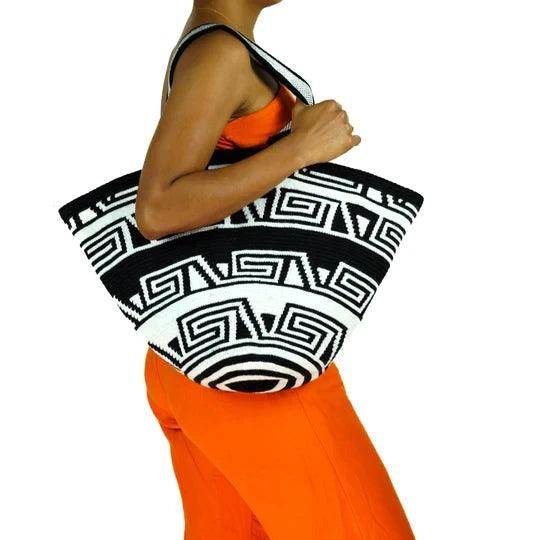
Shoulder Beach Bags
Dive into Mochila's latest collection of Handwoven Beach Bags: the Shoulder Beach Bags. Crafted with sun-soaked outings and coastal adventures in mind ... these Stylish Shoulder Bags for the Beach encapsulate the perfect balance of breezy, vibrant, and effortlessly chic. Meticulously woven with traditional craftsmanship and modern aesthetics, each bag is a testament to Mochila's dedication to quality and style. Not only are they a feast for the eyes, but their ample space ensures you have room for all your beach essentials. Designed for durability, they're the Durable Beach Totes you've been searching for. Perfect for sun, sea, and everything in between. Browse our range now and let your beach escapades be elevated with Mochila's signature touch.








